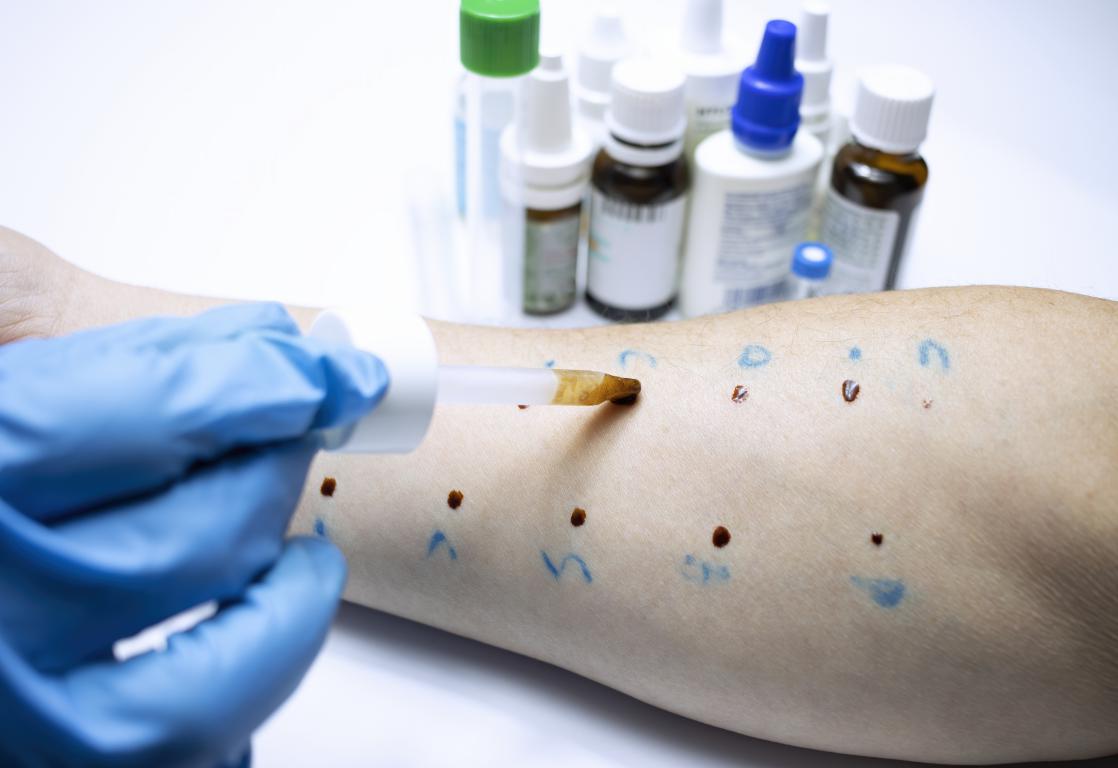Bio-degradable cards
Every card imaginable!
|
Bio-degradable cards Every card imaginable! Latex Allergies: Causes, Symptoms and ManagementUnderstanding Latex Allergies: Symptoms, Causes, and Triggers
What are the symptoms of a latex allergy?Latex allergy symptoms can range from mild to severe, manifesting in various ways depending on the individual's sensitivity. Mild reactions commonly present as contact dermatitis, characterized by localized skin irritation such as redness, itching, or hives, typically appearing at the site of latex contact. More severe systemic reactions may include respiratory distress, presenting as wheezing or difficulty breathing, swelling (angioedema) in various parts of the body, or even anaphylaxis. Anaphylaxis is a severe, potentially life-threatening allergic response that can cause a rapid drop in blood pressure, dizziness, and loss of consciousness, requiring immediate medical intervention.
What causes a latex allergy?A latex allergy develops when the body's immune system erroneously identifies proteins present in natural rubber latex as harmful invaders. This hypersensitivity reaction is acquired through repeated exposure to latex products. Over time, consistent contact with items such as latex gloves, balloons, or certain medical devices can sensitize the immune system. Once sensitized, subsequent exposures trigger the release of histamine and other chemicals, leading to the characteristic allergic symptoms.
What products are common sources of latex?Natural rubber latex is a ubiquitous material found in a wide array of everyday items and medical equipment. Common sources include disposable gloves used in healthcare and household tasks, balloons, rubber bands, and the elastic components in various types of clothing. In medical settings, latex can be found in catheters, bandages, blood pressure cuffs, and some surgical equipment. Less obvious sources might include baby dummies (pacifiers), certain types of household cleaning gloves, condoms, and even some athletic shoes. Identifying and checking product labels for "latex-free" alternatives is crucial for individuals with a latex allergy to minimize exposure.
Who is at risk of developing a latex allergy?Certain populations demonstrate an elevated risk of developing a latex allergy due to increased or prolonged exposure, or pre-existing allergic conditions. Healthcare workers are particularly susceptible due to frequent and direct contact with latex gloves and other medical devices. Individuals who have undergone multiple surgical procedures may also be at higher risk because of repeated exposure to latex during medical interventions. Furthermore, individuals with other allergic conditions, particularly those with food allergies to bananas, kiwis, avocados, chestnuts, or papayas, are at increased risk. This phenomenon, known as cross-reactivity, occurs because these fruits contain proteins structurally similar to those found in natural rubber latex, which can trigger an allergic response in sensitized individuals.
Diagnosing and Managing Latex Allergies
How is a latex allergy diagnosed?Diagnosing a latex allergy involves a comprehensive approach, combining a thorough review of the patient's medical history, a physical examination, and specific diagnostic allergy tests. During the medical history intake, the healthcare provider will inquire about past exposures to latex and any reactions experienced. Confirmatory testing typically includes a skin prick test, where small amounts of latex allergen are applied to the skin to observe for a localized allergic response, or a blood test (RAST or ImmunoCAP) that measures the level of latex-specific IgE antibodies in the bloodstream. These evaluations are best performed by an allergist or immunologist, specialists who can accurately interpret the results and provide a definitive diagnosis.
Can a latex allergy be cured?Presently, there is no definitive cure for a latex allergy. Once an individual's immune system becomes sensitized to latex proteins, the allergy is typically lifelong. Therefore, the primary focus of managing a latex allergy revolves around proactive prevention and rapid management of any accidental exposures. This includes strict avoidance of latex-containing products and the preparedness to treat potential allergic reactions promptly with prescribed medications, such as antihistamines for mild symptoms or adrenaline (epinephrine) auto-injectors for severe systemic responses.
What should you do during a severe allergic reaction?During a severe allergic reaction, prompt and decisive action is absolutely critical to prevent life-threatening complications. If an individual experiences symptoms such as significant difficulty breathing, persistent coughing, wheezing, swelling of the face, lips, or throat, a sudden drop in blood pressure leading to dizziness or fainting, or a generalized rash with itching, these are indicators of anaphylaxis. In such cases, the immediate administration of an adrenaline (epinephrine) auto-injector (e.g., EpiPen, Jext) is paramount, if one has been prescribed. Following the administration of adrenaline, emergency medical services (e.g., calling 911 or your local emergency number) must be contacted immediately, even if symptoms appear to improve, as a second wave of symptoms (biphasic reaction) can occur.
How can you manage a latex allergy in daily life?Effectively managing a latex allergy in daily life requires diligent identification and avoidance of latex-containing products across various environments. Individuals should actively seek out and utilize latex-free alternatives for items such as gloves, balloons, and medical supplies. It is crucial to inform employers, schools, childcare providers, and healthcare professionals about the allergy to ensure a safe environment and prevent accidental exposure. Carrying an allergy identification card or wearing medical alert jewelry can effectively communicate the allergy to others, especially in emergency situations. Furthermore, always having prescribed emergency medication, such as antihistamines and an adrenaline auto-injector, readily accessible is an essential component of a comprehensive management plan.
Latex Allergies in Specific Environments
How can workplaces accommodate people with latex allergies?Workplaces play a crucial role in ensuring a safe environment for individuals with latex allergies through proactive accommodation strategies. Key measures include completely transitioning to latex-free gloves and other supplies throughout the facility. This necessitates proper labeling of all products to clearly indicate whether they contain latex or are latex-free. Comprehensive education for all staff members on the risks associated with latex exposure, the symptoms of allergic reactions, and the importance of using non-latex alternatives is also vital. In healthcare settings, this often translates to the widespread adoption of synthetic materials like nitrile, vinyl, or neoprene for gloves and other medical devices to protect both patients and healthcare workers.
Are there risks associated with latex balloons?Latex balloons pose a significant risk for individuals with latex allergies due to the way they release latex proteins into the environment. When latex balloons are inflated, handled, or especially when they pop, microscopic latex particles can become airborne and subsequently inhaled or come into contact with skin or mucous membranes, triggering an allergic reaction. For this reason, it is strongly recommended that individuals with latex allergies, and those responsible for their care, completely avoid latex balloons. Safer alternatives, such as mylar or foil balloons, which do not contain natural rubber latex, should be chosen for celebrations and events.
What are the challenges of having a latex allergy in healthcare settings?Healthcare environments inherently present unique challenges for individuals with latex allergies due to the historical and pervasive use of latex-based products in medical care. While many hospitals and clinics have made significant strides towards becoming "latex-safe" or "latex-free," latex can still be found in various items, including examination gloves, surgical gloves, catheters, intravenous tubing, bandages, and even some medication stoppers. This necessitates constant vigilance. It is absolutely essential for individuals with a latex allergy to proactively inform all medical staff—from receptionists to nurses and doctors—about their allergy upon every admission, appointment, or interaction to prevent inadvertent exposure and ensure the use of appropriate latex-free alternatives throughout their care.
How do food allergies relate to latex allergies?A notable relationship exists between latex allergies and certain food allergies, a phenomenon often referred to as latex-fruit syndrome or cross-reactivity. This occurs because some plant-based foods contain proteins that are structurally similar to those found in natural rubber latex. Common foods implicated in this cross-reactivity include bananas, kiwis, avocados, chestnuts, papayas, and potatoes. Individuals who are allergic to latex may experience allergic reactions, ranging from oral allergy syndrome symptoms (itching or tingling in the mouth) to more severe systemic reactions, when consuming these specific foods. It is important for individuals with a latex allergy to discuss the potential for cross-reactivity with an allergist, who can provide guidance on dietary considerations and testing if necessary.
Staying Safe with a Latex Allergy
Can you develop a latex allergy later in life?Yes, it is entirely possible to develop a latex allergy at any point during one's lifespan, even if previous exposures caused no issues. This late-onset development typically occurs after repeated or prolonged exposure to latex-containing products, as the immune system gradually becomes sensitized to the latex proteins. Certain professions or medical histories increase this susceptibility; for instance, healthcare workers, who have frequent daily contact with latex gloves and other medical devices, or individuals who have undergone numerous surgeries and medical procedures, are at a higher risk of developing a latex allergy later in life due to cumulative exposure.
Are there any medications that can help prevent reactions?Currently, there is no preventative medication that can stop a latex allergy from developing or completely block an allergic reaction from occurring if exposure happens. The cornerstone of managing a latex allergy remains strict avoidance of latex. However, certain medications are vital for treating the symptoms of an allergic reaction if accidental exposure occurs. Antihistamines, available over-the-counter or by prescription, can be effective in reducing mild symptoms such such as itching, hives, or runny nose. For severe, life-threatening reactions like anaphylaxis, an adrenaline (epinephrine) auto-injector is the critical emergency treatment. It is imperative to consult with an allergist or healthcare professional to develop a personalized allergy action plan and receive guidance on appropriate emergency medications and their correct usage.
How can you explain a latex allergy to others?Effectively communicating the nature and severity of a latex allergy to others is crucial for safety. When explaining your allergy, it is important to convey that it is a serious medical condition and emphasize that even minimal exposure to latex can trigger a range of reactions, potentially including a life-threatening one. Clearly articulate which specific products (e.g., gloves, balloons, elastic bands) contain latex and why it is essential to use non-latex alternatives. Providing concrete examples can help others understand the pervasive nature of latex. Carrying a professionally prepared latex allergy alert card or wearing medical identification jewelry is an exceptionally practical and efficient way to communicate this vital information, especially in emergency situations where you might be unable to speak for yourself.
What should you look for when buying products?When purchasing products for use in your daily life, developing a habit of meticulous label checking is paramount for managing a latex allergy. Always scrutinize product labels for explicit statements regarding latex content. Prioritize items that are clearly marked or certified as "latex-free." Be aware that the absence of a "latex" warning does not automatically mean a product is latex-free, as labeling regulations can vary, and some manufacturers may not list all components. If there is any doubt about the latex content of a product, the safest course of action is to directly contact the manufacturer for clarification. Over time, you will build familiarity with reliable brands and specific product lines that consistently offer safe, latex-free alternatives, streamlining your shopping process.
© 2024 The Card Project Uk Ltd
VAT: 453 2087 06
|